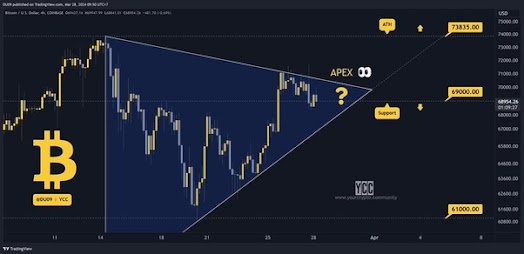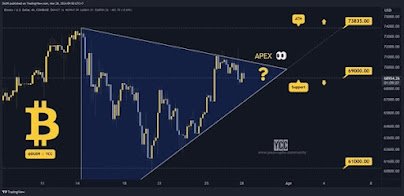Article Outline
- The next sections include an introduction, a brief summary of the subject and its significance, Understanding Crypto vs. Real Estate for Money Laundering a comparison of the two types of properties in terms of money laundering.
- Data from Europol an overview of Europol’s money laundering results, and more.
- Real estate is preferred for money laundering due to the following reasons:
- Factors Contributing to Real Estate’s Prevalence
- Challenges with Cryptocurrency Regulation
- Discussion of Cryptocurrency Regulation
- Benefits of Real Estate for Money Laundering
- Public Perception vs. Reality**; Dispelling myths about money laundering; The following are some examples of how real estate is used in money laundering
- Case Studies
- Techniques Used in Real Estate Laundering
- Common Methods Applied in Real Estate Laundering
- Measures to Combat Real Estate Laundering
- Efforts to Prevent Real Estate from Being Misused
- Conclusion
- Highlighting Important Points and Stressing the Need for Vigilance
Commonly Held Myth: The Predominance of Real Estate Over Cryptocurrency in Money Laundering When it comes to financial crime, Bitcoin is frequently highlighted as the main instrument used for money laundering. But as recent data from Europol reveals, real estate is a more effective means of laundering illicit profits than cryptocurrency. Let’s examine the truth behind this common misperception.
- Knowing How to Launder Money Using Crypto vs. Real Estate
- Understanding Crypto vs. Real Estate for Money Laundering
- The Crypto Narrative
Cryptocurrency is portrayed in the media as the ultimate means of financing illegal activity. This impression has been influenced by its decentralized structure, pseudonymous nature, and seeming anonymity. Crypto is obviously a part of money laundering, but it’s not the main player in the game.
Real Estate’s Underestimated Role
The media portrays cryptocurrency as the most effective way to finance illicit activities. Its pseudonymous nature, decentralized structure, and apparent anonymity have all contributed to this image. Although cryptocurrency plays a role in money laundering, it is not the primary actor.
Data from Europol
The most recent money laundering report from Europol provides a clear picture. As per their research, a considerable proportion of monies that are laundered are facilitated through real estate transactions as opposed to cryptocurrency exchanges. This casts doubt on the widely accepted story and emphasizes the need for a more comprehensive understanding of financial crime.
- A Factor Affecting the Prevalence of Real Estate
- Tangibility and Perceived Legitimacy
In contrast to cryptocurrencies, which are only available online, real estate provides a physical asset that can be purchased, sold, and kept in person. Compared to cryptocurrency transactions, real estate transactions are less investigated because of their intrinsic tangibility.
Regulatory Loopholes
Unlike cryptocurrencies, which are exclusively accessible online, real estate is a tangible asset that can be bought, traded, and retained locally. Because real estate transactions are inherently more tangible than bitcoin transactions, they are subject to less investigations
Value Appreciation and Wealth Preservation
The added benefit of long-term wealth preservation and value appreciation is provided by real estate. Criminals can profit from rising property values over time in addition to laundering their money by investing illicit monies in real estate.
Diversification and Portfolio Concealment
.
Money launderers might spread their risk and hide the full amount of their criminal holdings by spreading their illicit assets across several properties. It becomes more challenging for law enforcement organizations to locate and successfully seize criminal assets as a result of this diversification.
Reality versus Public Perception
The public is frequently misled by the dominant narrative to believe that bitcoin is the main medium used for money laundering. Europol’s results, however, refute this notion by emphasizing how crucial real estate is in aiding illegal financial activity.
Case Studies
- Luxury Real Estate Purchases
Luxurious real estate has been used as a means of laundering illicit funds in a number of well-publicized situations. Criminals have used real estate investments to hide the source of their unlawful money, from large estates in the Caribbean to penthouse apartments in Manhattan.
2. Hell Company Transactions
Real estate transactions are typically facilitated by shell firms, which are frequently founded in jurisdictions with loose disclosure laws. These enigmatic business formations act as intermediaries for money laundering, hiding the ultimate benefactors’ identity behind a curtain of secrecy.
Methods Applied in the Laundering of Real Estate
- Property Flipping
Flipping properties refers to the quick purchase and sale of real estate with the goal of deceitfully raising its value and transferring money from one source to another. Money launderers can create the impression of genuine revenue while concealing the true source of funds by quickly transacting a number of times.
2. Mortgage Fraud
Mortgage fraud schemes entail getting loans to buy real estate by providing false or misleading information. Through the appearance of genuine mortgage payments, these fraudulent transactions successfully pump illicit cash into the lawful financial system.
Measures to Combat Real Estate Laundering
Enhanced Due Diligence
Strict due diligence procedures can be used to detect and reduce the risk of money laundering in real estate transactions. Financial institutions and regulatory agencies can better identify suspicious activity by thoroughly screening buyers and sellers.
Enhanced Reporting Requirements and Transparency
Closing regulatory gaps and discouraging money launderers can be achieved in part by enforcing more stringent reporting requirements on real estate brokers and agents and by improving transaction transparency. Regulations requiring thorough disclosures and transaction reporting can help authorities monitor and hold the real estate industry more accountable.
Conclusion
Even though cryptocurrency is frequently the main topic of conversation when it comes to money laundering, real estate still plays a big part in helping to facilitate illegal financial activity. The data from Europol highlights the need for a more comprehensive understanding of financial crime and a multifaceted strategy to tackle money laundering in all of its forms.
Frequently Asked Questions (FAQs)
1. Is cryptocurrency completely irrelevant in money laundering compared to real estate?
Although real estate is still the most popular instrument for money laundering, bitcoin is nonetheless being used in some illegal activities because of its global accessibility and pseudonymous character.
2. Are there any specific regions known for their lenient real estate regulations?
Yes, certain jurisdictions, such as offshore tax havens and countries with lax oversight, are notorious for their lenient real estate regulations, making them attractive destinations for money launderers.
3. How can people safeguard themselves against unintentionally taking part in real estate laundering schemes?
Being alert is essential. Investigate properties and parties to transactions in detail, and notify appropriate authorities or financial institutions of any questionable conduct.
4. What are some indicators that money laundering might be involved in a real estate transaction?
Unusual huge cash payments, intricate ownership arrangements involving shell corporations, and deals involving properties with no discernible legal use or purpose are examples of red flags.
5. How can financial institutions help stop the money laundering of real estate?
Financial institutions play a critical role in identifying and stopping money laundering related to real estate by putting in place rigorous due diligence procedures, flagging suspicious transactions, and collaborating with











